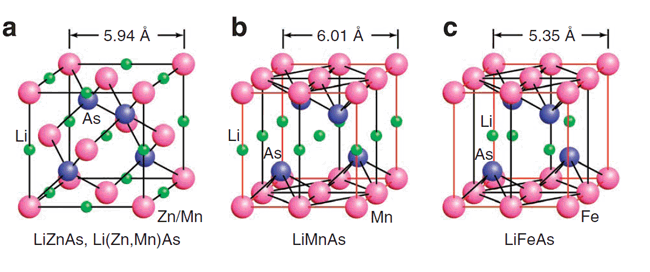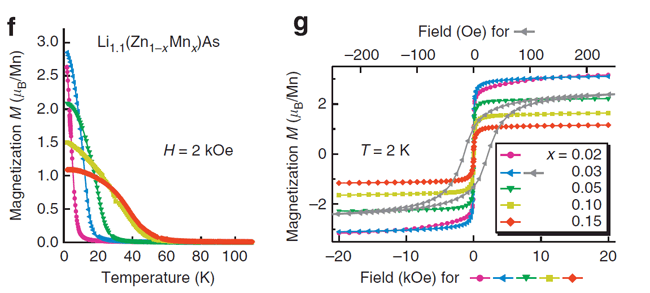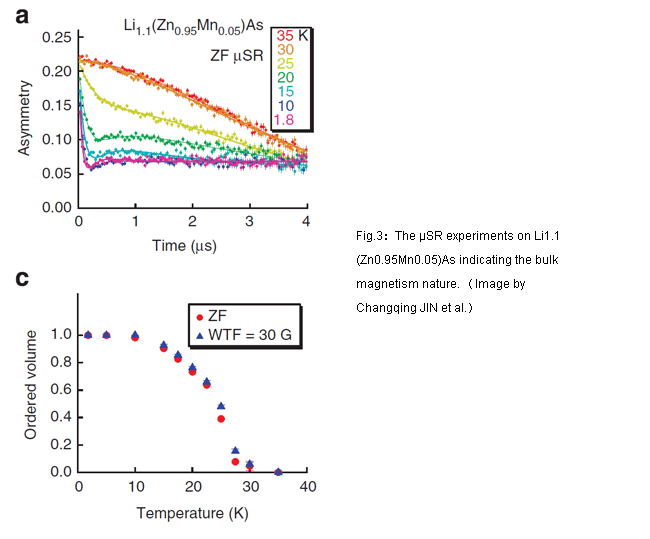A new generation ferromagnet based on I–II–V semiconductor
Date:11-10-2011 Print
Ferromagnetic systems obtained by doping transition metals into semiconductors1 have generated extensive studies since early 1990s because of their potential use for spin-sensitive electronics (spintronics) devices. In proto-typical systems based on III–V semiconductors, such as (Ga,Mn)As, sub, stitution of divalent Mn atoms into trivalent Ga sites leads to severely limited chemical solubility. Because of this, the specimens are chemically metastable, available only as thin films, and their material quality exhibits high sensitivity on preparation methods and heat treatments. For (Ga,Mn)As the doped charge & spin are simultaneously generated by Mn substitution at Zn site. It is thus practically desired to search new diluted ferromagnet where charge & spin can be individually tuned in order to much extent optimize the interplay of charge & spin.
LiZnAs is a direct-gap semiconductor that has a cubic crystal structure (Fig. 1) with a band gap (1.61 eV) similar to that of GaAs (1.52 eV). Monovalent Li and divalent Zn together substitute the role of trivalent Ga. The local density approximation calcula¬tion obtained the band structure very close to that of GaAs.
Recently Prof. Changqing JIN’s group at Institute of Physics, Chinese Academy of Sciences has succeeded in synthesizing new fer¬romagnet Li1+y(Zn1−xMnx)As based on a I–II–V semiconductor. Ferromagnetism with a critical temperature is near 50 K even at 2% Mn doping (Fig. 2). The bulk material enables to detect the magnetic order using μSR method (Fig. 3). This is an extended work of Prof. Jin’s group on the “111” type iron pnictide superconductors what they discovered in 2008 during iron superconductor fever (Solid State Communications 148, 538(2008)). Semiconducting LiZnAs, ferromagnetic Li(Zn,Mn)As, antiferromagnetic LiMnAs, and superconducting LiFeAs systems share square lattice As layers, which may enable development of novel junction devices in the future.
Prof. Jin performed the research in collaboration with Prof. Uemura at Columbia University; benefited from the help of Prof. Yayu Wang at Tsinghua University, Prof. Maekawa from ASRC JAEA of Japan & Prof. Uchida from University of Tokyo of Japan. The paper is published recently on Nature Communications 2:422 (2011).
 |
| Fig.1:The crystal structure of (a) LiZnAs、(b) LiMnAs、(c)LiFeAs (Image by Changqing JIN et al.) |
 |
| Fig.2:The ferromagnetic Li1.1(Zn,Mn)As. (Image by Changqing JIN et al.) |
 |

